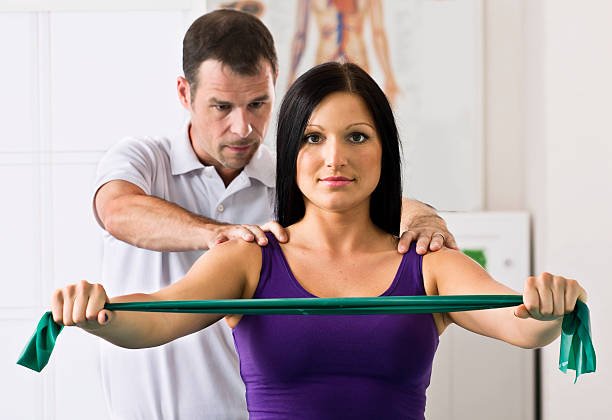
Shoulder Pain: Diagnosis & Non-Surgical Relief in Phoenix
Understanding the Anatomy of the Shoulder
The shoulder is a complex joint made up of bones, muscles, tendons, and ligaments that allow for a wide range of motion.
Key components of the shoulder include:
Glenohumeral joint – the ball-and-socket joint formed by the humerus (upper arm bone) and the glenoid (part of the scapula).
Rotator cuff – a group of four muscles and tendons that stabilize the shoulder.
Labrum – a ring of cartilage that deepens the socket and provides support.
Bursa – fluid-filled sacs that reduce friction between soft tissues.
Acromioclavicular (AC) joint – connects the collarbone to the top of the shoulder blade.
Anatomical diagrams of the shoulder joint showing bones, rotator cuff, and labrum
Common Symptoms of Shoulder Pain
Shoulder pain may develop suddenly or gradually. Understanding your symptoms helps narrow down the underlying cause.
Common symptoms include:
Pain with reaching overhead or behind your back
Night pain, especially when lying on the affected side
Weakness or fatigue with lifting
Clicking, catching, or popping in the joint
Limited range of motion
Shoulder instability or the sensation of “slipping out of place”
Shoulder Pain vs. Pain from the Neck
Not all shoulder pain originates from the shoulder itself. Sometimes, pain is referred from the cervical spine.
Signs your pain may be coming from the neck include:
Tingling, numbness, or radiating pain down the arm
Pain that worsens with neck movements
Weakness in the hand or forearm
Symptoms that follow a nerve root distribution
If you're experiencing these symptoms, a pinched nerve in the neck (cervical radiculopathy) may be the true source of discomfort. Dr. Sobel performs detailed evaluations to distinguish between shoulder-origin pain and neck-related nerve pain.
Common Causes of Shoulder Pain
Frozen Shoulder (Adhesive Capsulitis)
Stiffness and pain that limit movement, often developing gradually and resolving slowly. Common in people over 40, especially women and diabetics.
To learn more about adhesive capsulitis click here.
Calcific Tendinitis
Calcium deposits build up in the tendons of the rotator cuff, leading to inflammation and sudden, intense pain.
Shoulder Bursitis
Inflammation of the bursa from overuse or repetitive motion. Causes pain and tenderness on the outer shoulder.
Rotator Cuff Tendinitis or Tears
Ranges from mild inflammation to full-thickness tears. Pain is often worse with overhead activity or at night.
Shoulder Instability
Can result from trauma or ligament laxity. Causes slipping or dislocation of the shoulder joint.
Labral Tears
Damage to the cartilage ring in the socket causes pain, popping, and instability, especially in athletes.
Osteoarthritis (OA) of the Glenohumeral Joint
Degenerative joint disease that causes deep, aching pain, stiffness, and reduced range of motion.
Here is a great resource from the American Academy of Orthopedic Surgeons (AAOS) on shoulder joint arthritis. Click here to read more.
MRI image of the shoulder demonstrating a normal rotator cuff
MRI image of the shoulder demonstrating a very large rotator cuff tear
Severe osteoarthrtis of the glenohumeral joint of the shoulder
Non-Surgical Treatments for Shoulder Pain
At Sobel Spine and Sports, we focus on non-operative care tailored to your specific diagnosis and goals. Many patients improve without the need for surgery.
Our non-surgical treatment options include:
Physical therapy: Targeted exercises to strengthen the shoulder and restore movement
Activity modification: Avoiding movements that worsen symptoms
NSAIDs and anti-inflammatory strategies: Oral or topical therapies to reduce inflammation
Ultrasound-guided injections:
Corticosteroids for fast inflammation relief
Platelet-Rich Plasma (PRP) to promote natural healing
Bracing or shoulder slings: Short-term support during flare-ups
Posture correction & ergonomic guidance: Helpful for desk jobs and athletes
Patient performing shoulder strengthening exercises during physical therapy
Frequently Asked Questions (FAQs)
Get Expert, Non-Surgical Shoulder Pain Relief in Scottsdale
If you're struggling with shoulder pain—whether from a rotator cuff tear, frozen shoulder, or arthritis—Dr. Jerry Sobel at Sobel Spine and Sports is here to help. We specialize in accurate diagnosis and personalized, non-surgical treatment plans in Phoenix and Scottsdale, Arizona
👉 Call today or schedule an appointment online to get started.
📍 Located in Phoenix, AZ
📞 602-385-4160
🌐 Contact us today for an appointment






